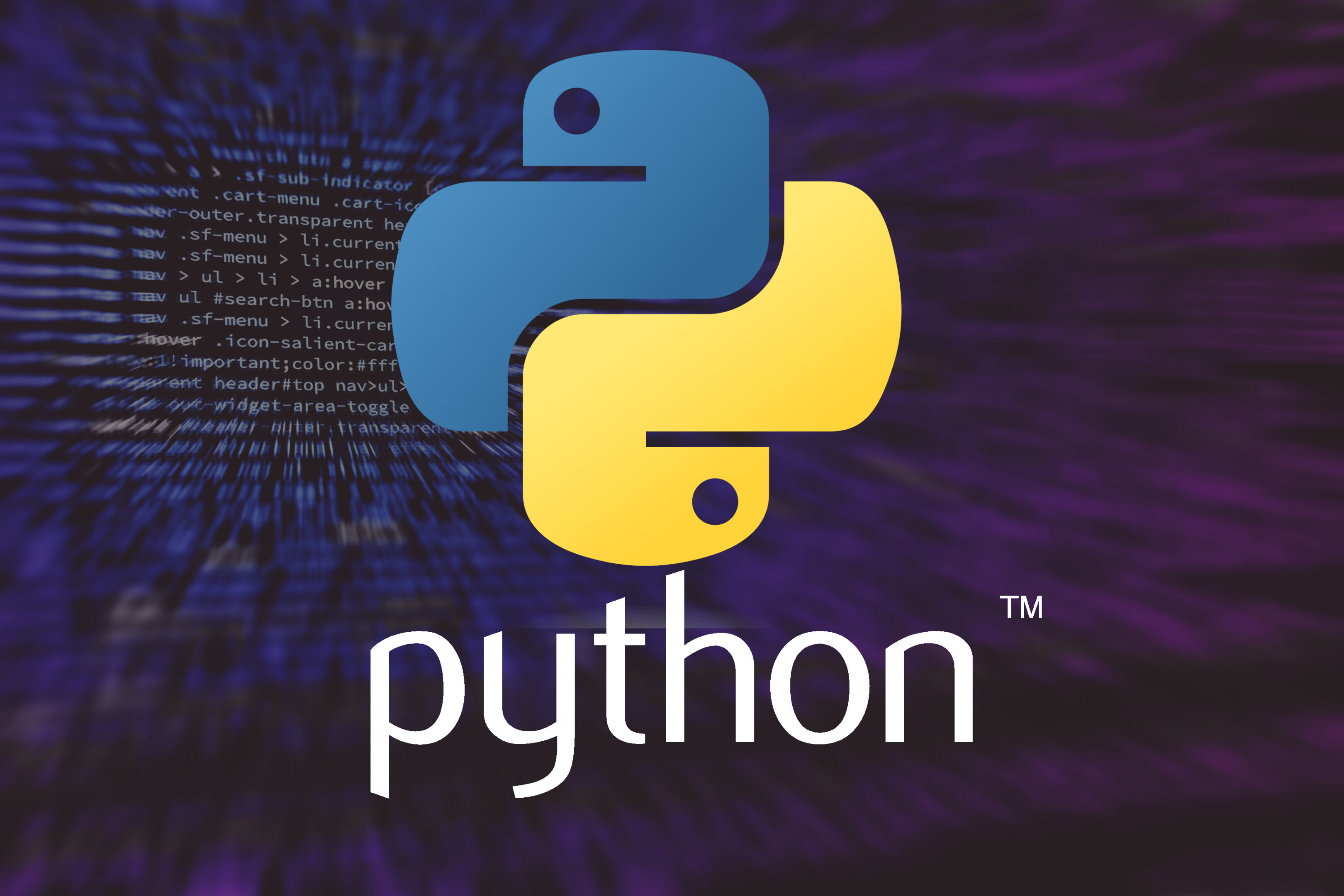Choosing the best Python IDE in 2025 can significantly impact your coding efficiency and overall development experience. With so many options available, it’s important to understand which environment best suits your specific needs and skill level. The most popular Python IDEs in 2025 continue to be PyCharm for its robust features tailored specifically for Python development, Visual Studio Code for its flexibility and extensions, and Jupyter for scientific computing applications.
For beginners, free options like Wing IDE 101 provide a simplified environment to learn coding basics without overwhelming new programmers. Meanwhile, experienced developers often debate between PyCharm’s advanced code analysis capabilities and VS Code’s lightweight yet powerful approach. Both offer free versions, though PyCharm’s premium features might appeal to professional developers working on larger projects.
Best IDE for Python
Python remains one of the most widely used programming languages in 2025, powering AI, data science, web development, automation, and more. Choosing the right IDE (Integrated Development Environment) can drastically improve productivity, debugging, and collaboration.
This guide highlights the best Python IDEs in 2025—their strengths, weaknesses, and ideal use cases.
Top Python IDEs in 2025
1. PyCharm (JetBrains)
- Best for: Professional developers, large projects, enterprise use.
- Features:
- Intelligent code completion & refactoring
- Advanced debugging & testing tools
- Built-in support for Django, Flask, and scientific libraries
- Integration with Git, Docker, and databases
- Pros: Extremely powerful, great for complex codebases.
- Cons: Heavy on resources, paid version needed for full features.
2. Visual Studio Code (VS Code)
- Best for: General-purpose Python development, beginners to pros.
- Features:
- Lightweight, extensible with Python extensions
- Integrated terminal & Git support
- Rich ecosystem of plugins (AI coding assistants, Jupyter, etc.)
- Pros: Free, fast, customizable.
- Cons: Requires extensions for full Python support.
3. JupyterLab
- Best for: Data science, machine learning, and research.
- Features:
- Interactive notebooks for Python, R, Julia
- Rich visualization support (Matplotlib, Plotly, Seaborn)
- Integrates with TensorFlow, PyTorch, scikit-learn
- Pros: Perfect for experimentation and teaching.
- Cons: Not ideal for large software projects.
4. Spyder
- Best for: Scientific computing & data analysis.
- Features:
- MATLAB-like interface
- Variable explorer for real-time data inspection
- Strong integration with NumPy, SciPy, Pandas
- Pros: Tailored for data scientists.
- Cons: Less suited for web/app development.
5. Thonny
- Best for: Beginners and students.
- Features:
- Simple, clean UI
- Step-through debugger to learn Python execution
- Pre-packaged with Python
- Pros: Easy learning curve.
- Cons: Limited for advanced projects.
6. Wing IDE
- Best for: Debugging-heavy workflows.
- Features:
- Advanced debugger with remote debugging
- Strong testing and refactoring support
- Pros: Great debugging tools.
- Cons: Less popular, smaller community.
7. Eclipse with PyDev
- Best for: Developers already using Eclipse.
- Features:
- Refactoring, debugging, Django support
- Strong integration with Java projects
- Pros: Good for polyglot developers.
- Cons: Heavier than VS Code or PyCharm.
Quick Comparison (2025)
| IDE | Best For | Pros | Cons |
|---|---|---|---|
| PyCharm | Large projects, pros | Powerful, enterprise-ready | Heavy, paid version |
| VS Code | All-around dev | Free, extensible | Needs extensions |
| Jupyter | Data science, ML | Interactive, visual | Not for big apps |
| Spyder | Scientific computing | MATLAB-like, data tools | Narrow use case |
| Thonny | Beginners | Simple, beginner-friendly | Limited features |
| Wing | Debugging workflows | Excellent debugger | Less popular |
| Eclipse | Multi-language dev | Strong integration | Heavy, dated |
How to Choose the Best Python IDE in 2025
- Beginners → Start with Thonny or VS Code.
- Data Science / ML → Use JupyterLab or Spyder.
- Professional Developers → Go for PyCharm or VS Code.
- Debugging Focus → Try Wing IDE.
- Polyglot Projects → Eclipse + PyDev works well.
Final Recommendation
- If you want all-around flexibility → VS Code.
- If you want enterprise-level power → PyCharm.
- If you’re into AI & Data Science → JupyterLab.
- If you’re just starting out → Thonny.
👉 In 2025, VS Code and PyCharm remain the top two IDEs for most Python developers, while JupyterLab dominates data science.
Key Takeaways
- PyCharm and Visual Studio Code remain the top Python IDEs in 2025, each with distinct advantages for different coding needs.
- Free IDE options like Wing IDE 101 are available for beginners learning Python programming fundamentals.
- The best Python IDE choice depends on your specific requirements, whether you need scientific computing support, advanced code analysis, or extensive customization options.
Choosing the Right Python IDE for Your Needs
Selecting the right Python IDE depends on your specific development needs, project complexity, and personal preferences. The ideal environment should enhance your productivity while providing tools that match your workflow.
Core Features and Extensibility
The most popular Python IDEs offer different levels of built-in functionality and customization options. PyCharm provides comprehensive features out-of-the-box, including advanced code analysis, intelligent code completion, and robust refactoring tools. It excels in error detection and offers suggestions to improve code quality.
VS Code takes a lightweight approach with exceptional extensibility through its marketplace. Developers can customize their environment by adding only the extensions they need, keeping the editor fast and responsive.
Both editors support syntax highlighting, code navigation, and IntelliSense features that make Python development more efficient. VS Code’s command palette provides quick access to numerous commands, while PyCharm’s deep integration with Python creates a more specialized experience.
For those who prefer classic editors with modern capabilities, editors with Vim emulation modes can combine familiar keyboard shortcuts with contemporary features.
Integrated Tools for Development Workflows
Modern Python IDEs integrate crucial development tools directly into the workspace. Version control integration allows developers to commit, push, and pull code without leaving the editor. PyCharm offers robust Git integration with visual diff tools and conflict resolution.
Debugging capabilities vary across IDEs. PyCharm provides a powerful integrated debugger with breakpoints, watches, and step-through execution. VS Code’s debugging tools work through extensions and support multiple programming languages.
Terminal access within the IDE streamlines workflow by eliminating the need to switch between applications. This integration is particularly valuable for testing code or running scripts.
Project management features help organize files and dependencies. PyCharm excels with its comprehensive project view, while VS Code uses a simpler folder-based approach that many developers find sufficient for their needs.
Support for Popular Frameworks and Libraries
For web development, Django and Flask support varies across IDEs. PyCharm Professional offers dedicated Django templates, code completion for template languages, and run configurations specifically for web applications.
Data science workflows benefit from IDEs that support libraries like NumPy, Matplotlib, and SciPy. Jupyter integration is increasingly common, with VS Code offering notebook editing capabilities directly in the editor.
Machine learning projects require visualization tools and integration with frameworks like TensorFlow. Some IDEs provide specialized extensions for these libraries, offering inline data visualization and simplified package management.
Interactive consoles enable quick testing of code snippets and data exploration. This feature is especially valuable for data scientists working with large datasets who need immediate feedback on their code.
Top Python IDEs and Their Key Advantages
Python developers have several powerful integrated development environments (IDEs) to choose from in 2025. Each option offers unique features tailored to different programming needs, skill levels, and project types.
PyCharm by JetBrains: A Comprehensive Suite
PyCharm stands out as one of the most robust Python IDEs available. Created by JetBrains, it offers comprehensive code analysis, intelligent code completion, and powerful debugging tools.
The IDE comes in two versions: Community (free) and Professional (paid). The Professional edition includes additional features like web development frameworks support and database tools.
PyCharm excels in refactoring capabilities and project navigation, making it ideal for large codebases. Its Git integration streamlines version control, while the integrated terminal eliminates the need to switch between applications.
Many professional developers prefer PyCharm for its productivity-enhancing features like code inspections that catch potential errors before runtime. Its comprehensive nature makes it particularly valuable for complex projects despite requiring more system resources than lighter alternatives.
Visual Studio Code: Versatility and Community Support
VS Code has rapidly become one of the most popular Python development environments. This lightweight, open-source editor by Microsoft offers remarkable flexibility through its extension marketplace.
The Python extension provides essential features like IntelliSense, linting, debugging, and code navigation. VS Code’s interface strikes a perfect balance between simplicity and functionality, with customizable layouts and themes.
Its cross-platform compatibility ensures consistent experience across Windows, macOS, and Linux. The integrated Git support makes version control straightforward for developers of all levels.
What truly sets VS Code apart is its vibrant community. Regular updates and extensive documentation keep the platform current and accessible. For developers working across multiple languages, VS Code’s ability to handle various programming languages makes it an efficient all-in-one solution.
Jupyter and Anaconda: For Data Science Enthusiasts
Jupyter notebooks provide an interactive computing environment ideal for data scientists and researchers. The web-based interface allows for creating documents that combine live code, visualizations, and narrative text.
Anaconda distribution bundles Jupyter with essential data science packages and tools like NumPy, pandas, and matplotlib. This comprehensive ecosystem simplifies environment management and package installation.
JupyterLab, the next-generation interface, offers a more flexible workspace with tabs, split views, and enhanced file browsing. Its cell-based execution model enables iterative development and immediate feedback on code snippets.
These tools excel in data exploration and visualization scenarios. The ability to document analysis alongside code makes Jupyter notebooks perfect for sharing research findings and educational content. For collaborative data projects, Jupyter’s format has become the standard for reproducible research.
Thonny: Ideal for Beginners and Education
Thonny is designed specifically for learning programming. This beginner-friendly IDE includes a simple, clean interface that eliminates distractions and focuses on the essentials.
Its step-by-step debugger visualizes how Python code executes, helping new programmers understand program flow. Thonny highlights syntax errors and provides helpful explanations rather than cryptic error messages.
The built-in variable inspector shows current values during code execution, making it easier to track changes. Installation is straightforward with Python included, removing setup barriers for beginners.
Thonny’s lightweight design runs well on older hardware, making it accessible for educational settings with limited resources. The IDE also includes beginner-friendly pip GUI for managing packages. For instructors teaching Python, Thonny provides an ideal environment that grows with students as they develop their programming skills.
Python IDE Decision Flowchart (2025)
Step 1: What’s your main goal?
- 🎓 I’m learning Python for the first time → ✅ Thonny
- 📊 I’m doing data science / AI / ML → Go to Step 2
- 💻 I’m building apps, websites, or large projects → Go to Step 3
Step 2: Data Science / AI / ML
- I want interactive notebooks, visualizations, experiments → ✅ JupyterLab
- I prefer a MATLAB-like environment with variable explorer → ✅ Spyder
Step 3: Application / Web / Enterprise Development
- I want a lightweight, customizable, free IDE → ✅ Visual Studio Code
- I need enterprise-level features, deep refactoring, and pro debugging → ✅ PyCharm
- I focus on advanced debugging workflows → ✅ Wing IDE
- I already use Eclipse for multi-language development → ✅ Eclipse + PyDev
🗂️ Visual Summary
Start
├── Beginner? → Thonny
├── Data Science / ML?
│ ├── Interactive notebooks → JupyterLab
│ └── MATLAB-like environment → Spyder
└── Software / Web Dev?
├── Lightweight & free → VS Code
├── Enterprise features → PyCharm
├── Debugging → Wing IDE
└── Already in Eclipse → PyDev
✅ With this flow, you can quickly decide based on your skill level and project type.
Frequently Asked Questions
Choosing the right Python IDE can significantly impact your coding efficiency and learning experience. The following questions address key considerations for both beginners and professionals.
What are the top features to consider when choosing an IDE for Python development?
When selecting a Python IDE, code completion and intelligent suggestions should be high on your priority list. These features help reduce typing errors and speed up coding.
Debugging capabilities are essential for identifying and fixing issues in your code. Look for IDEs with breakpoints, variable inspection, and step-through execution.
Version control integration allows seamless collaboration with other developers. IDEs that connect directly with Git, SVN, or other systems simplify code management.
Extension support helps customize your development environment. The ability to add plugins for specific frameworks or tools can greatly enhance productivity.
How do Integrated Development Environments such as PyCharm and Visual Studio Code differ for Python programming?
PyCharm offers a more comprehensive out-of-the-box Python experience with advanced code analysis and robust Django support. Its professional version includes database tools and remote development capabilities.
Visual Studio Code provides a lightweight, customizable environment that performs well even on less powerful computers. Its extension marketplace allows you to add only the features you need.
PyCharm emphasizes Python-specific tools and integration, while VS Code excels as a multi-language platform. This flexibility makes VS Code popular for developers who work with multiple programming languages.
Resource usage differs significantly between these options. PyCharm typically requires more system resources but offers deeper Python-specific intelligence.
Which Python IDEs offer the best support for beginners looking to learn Python?
IDLE, Python’s built-in IDE, provides a simple interface perfect for beginners. It comes bundled with Python installations and offers basic syntax highlighting and debugging.
Thonny is specifically designed for learning programming. It includes visualization tools that help beginners understand variable assignments and function calls.
Replit offers a browser-based coding environment with no installation required. Its collaborative features make it excellent for classroom settings and remote learning.
PyCharm Community Edition balances power with accessibility. While it has a steeper learning curve, its intelligent suggestions can help beginners avoid common mistakes.
What are the pros and cons of using a free IDE versus a paid IDE for Python?
Free IDEs like VS Code and PyCharm Community Edition offer excellent functionality without cost. They provide core features sufficient for most development tasks and personal projects.
Paid options such as PyCharm Professional include additional tools for web development, database management, and remote deployment. These features benefit professionals working on complex projects.
Support services differ significantly between free and paid options. Paid IDEs typically offer dedicated customer support, while free alternatives rely on community forums and documentation.
License restrictions may impact team usage. Enterprise environments often require paid licenses that include centralized management and compliance features.
What developments in Python IDEs have been popular among developers on platforms like GitHub and Reddit?
AI-assisted coding features have gained significant traction in the Python community. Tools like GitHub Copilot integration help developers write code faster by suggesting entire functions and blocks.
Remote development capabilities have become increasingly important. IDEs that support coding on cloud-based virtual machines allow developers to work from anywhere with consistent environments.
Jupyter notebook integration within traditional IDEs has grown popular for data science workflows. This combines the interactive exploration of notebooks with the structured environment of an IDE.
Community extensions and themes receive substantial attention on platforms like Reddit. Developers frequently share custom setups that enhance productivity or visual comfort.
How do Python IDEs cater to the needs of professional programmers working on complex projects?
Refactoring tools help professionals maintain clean codebases when working on large projects. Features for renaming variables, extracting methods, and reorganizing code save significant time.
Profiling and performance analysis capabilities allow developers to identify bottlenecks. Professional IDEs provide insights into execution time and memory usage to optimize code.
Team collaboration features such as code review tools and shared configurations ensure consistent development practices. These features help maintain code quality across large teams.
Integration with CI/CD pipelines automates testing and deployment processes. Professional IDEs connect with systems like Jenkins or GitHub Actions to streamline software delivery.







